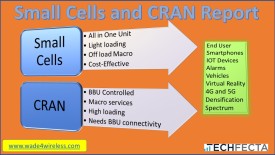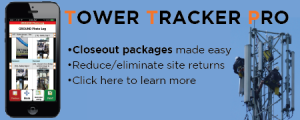I was reading several articles about the failure of Google Broadband to rollout nationwide. The article in TechDirt was really interesting. It’s listed below under resources.
The thing is, Google thought it would be easy to roll out fiber. I think they thought it would be cost-effective to be the resource and the provider. What they didn’t count on is how much hard work and upfront money is needed. The could have partnered with some smaller ISPs to leverage their expertise. In this case, they thought they knew better. They learned the hard way.
For a list of products to support Wade4Wireless, click here!
I see the difference as Google was used to building data centers and applications. While this is work, they can test it, but they have to build it and hope the people like it. If they don’t sign up, then they can shut it down and move on for relatively little cost and no ongoing costs other than internet access.
If you deploy a system, you have a heavy upfront cost, ongoing OpEx, and expense to shut things down. You can pull the fiber and use it somewhere else, once it’s pulled its garbage in most cases.
Then, if you build it and nobody signs up, you’re losing money every month because you’re paying for that pole, that line, that support as part of a heavy OpEx whether it’s used or not.
It takes time, patience, money, and an investment to roll out fiber. It takes CapEx up front and OpEx for the long haul. It’s not an easy venture, and it takes balls.
That’s why the smaller businesses struggle, they have to do all of this, and they probably have a debt to pay. You have to pay your contractors when they do the work. You have to pay for the supplies and fiber as you roll it out. You have to pay for the permits up front, a hefty cost. You have to pay for the site acquisition up front. There are very few shortcuts.
Almighty Google learned this the hard way. That’s probably why they always complain about spectrum but have yet to win any in the auctions. They know it would be a long hard and expensive road to build a wireless system. Why do you think Virgin is an MVNO? Richard Branson didn’t want to outlay billions of dollars or Euros just to hope people would use it. So he bought minutes off of an established carrier in the countries where he wanted to do business. Then he started reselling. It just made sense. With a low CapEx and little OpEx, he can start selling smartphones on day one without hoping anyone would sign up or be limited on coverage. I wonder how he will compete in the unlimited data world?
In all honesty, Google did a great job where they did deploy fiber. It was a resounding success in the markets they reached. At least, I thought it was great. They helped to prove that it would work. People wanted them in their markets for a reason. Comcast and AT&T hated them for a reason. It all means the same thing, better internet for the end-user, which is you and me.
Planning:
It takes a plan. One thing I learned from my Smart City days is that you need to have a plan to deploy. Depending upon your job, you probably thought about this differently. What I mean is that the deployment teams think of site acquisition, labor, contractors, union issues, permitting and zoning. If you’re the financial guy, you thought about the leasing, the outlay of funds, the investment, and the payback. If you’re the pole guy, you thought about the leases, the competition, the potential for protests from the preexisting companies on the poles.
My point here is, you need to start high level and work your way down. In the early days of small cell deployment, we worked with many teams to see what we could do.
The thing is that Het Net planning and fiber planning have a lot in common. OK, when I say Het Net, I mean small cells, sorry.
- Where is the current fiber?
- Getting access to poles,
- Get permission from whoever owns the poles,
- Possibly get permission from whoever is already on the poles, depending on the lease and noncompete clauses,
- Full site acquisition which is not cheap, probably more than a year’s rent on said pole, (fiber is not so bad, but for Small Cells it gets expensive),
- Permitting, zoning, approvals,
- Small Cells need fiber run to them, so they have the issue of getting fiber unless they have wireless backhaul,
- Backhaul connections; where is the nearest fiber connection that you can connect your new fiber or small cell to? How do you get it to this location? Can you do overhead, or will you have to dig?

- Plan well, my friends!
If you wonder why I am dragging small cells into this, it’s because the FWA, Fixed Wireless Access, models are going to require sites at poles to be the new last mile. Verizon and AT&T will be using these poles to do just that. They will need either a wireless backhaul or fiber at the pole. It’s not magic, but rather a well-planned deployment hat will make it happen.
Deployment and turn up:
Here is where you need someone to deploy. It would be great if you had plug and play, but that may not always be the situation, you may need to have an installer then a commissioning engineer to make it work properly. However, this phase is efficient and pretty reasonable cost wise. It isn’t like the planning where you have to take all the what-ifs into consideration. Here you have the installer and the commissioning engineer. you may need the city to help or traffic control. For the most part, it should be straightforward as long as you know the local municipality or city’s regulations for working on poles in their jurisdiction.
Finally, getting the customer!
The customers need to know that you have something in the market. It takes very localized advertising and connections. The carriers generally rely on a website to tell them where customers are asking. The problem is, what if they are not customers already? You have to reach them, maybe with flyers, email, snail mail campaigns, or good old door knocking.
Google did something amazing by holding contests to ask what cities wanted them. Could you imagine Comcast doing this? Who would ask them to come to them? I already know of some cities that wanted Comcast to come in, but they can’t go into another cable company’s territory, and they will only do it if they see a very large payback. I worked with Comcast engineers in the past, and if they aren’t interested, they just don’t return your calls. Sure, it sucks, but you get the hint pretty quick. Besides, in a company like that, you need an executive to push something like that. I got the impression that they really don’t care if a city wanted Comcast in your market. That is the complete opposite of Google Fiber! Everyone wanted them so much they were changing the local rules to get them. It just wasn’t enough.
One more thing, cable companies are a good old boys network, they generally don’t tramp on each other’s toes. If someone is in the market, even if they totally suck, they probably have a non-compete with big brother Comcast. Comcast doesn’t look at other cable companies as competition, they look at them as potential partners and customers. So if you want to see a new ISP, it’s either a larger carrier, like T-Mobile, Verizon or AT&T, or someone like Google. Once in a while, you have a local company build, but they find it hard unless they know they have a set amount of customer lined up and waiting. They need to see the payback before they begin if they’re smart. That’s why so many were happy when the smart city thing was happening. Now they are let down because smart city rollouts take money from someone other than the city. Again, a solid business case helps.
Resources:
- https://www.techdirt.com/articles/20180910/10561640607/google-fibers-failure-succeeded-shining-light-pathetic-broadband-competition.shtml
- https://www.techdirt.com/articles/20150628/13060131486/google-fiber-has-accomplished-more-broadband-than-our-national-broadband-plan-ever-did.shtml
- https://hbr.org/2018/09/why-google-fiber-is-high-speed-internets-most-successful-failure
Thank you for your support and your time. And good job on learning all you can in the wireless industry, you are amazing! Now, go out and impress people! Would you sign up for a membership site? If so, email me at wade@techfecta.com and write Membership.
Do you want an occasional email with free PDFs of these reports along with book and training offers? Read posts like these offline!
Be smart, be safe, and pay attention!
See Ya!
More products from TechFecta and Wade4Wireless that support WADE!
The foundations below do beautiful work, spreading love when all seems lost.
Climbers can get seriously injured and/or die on the job. Support the workers who build and install the wireless systems!
Together we can honor and remember the fallen in our wireless family.







 Putting together your smart city tech solutions, planning, development, and more…TechFecta! Guiding you to a better plan through consulting!
Putting together your smart city tech solutions, planning, development, and more…TechFecta! Guiding you to a better plan through consulting!



















